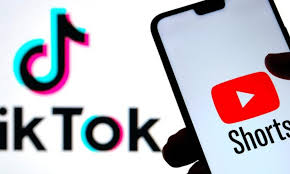Duration As A Constraint (Shorts Redux)
There is nothing that novel or charming about songs of short duration. We have short art films, and of course YouTube content and other microcontent, such as the new Kindle Singles.
Art songs were typically pithy. Ned Rorem art songs are under three minutes. Some songs on Silverstein's simply titled Short Songs are 30 seconds and sound like complete ideas. Many movements from orchestral works can sometimes be less than two minutes. Even ringtones are in fact "songs" if considered to be complete sonic statements that we use as Music.
The objective of a composer is to make complete musical statements--however long they take. Faster tempos will have a natural tendency to decrease total duration, as the musical ideas lose kinetic energy more quickly, especially if parts are played manually (as opposed to looping them).
Short pop songs tend to be fast, typically with manic drumming. Slower songs, in the days when all music was on some type of fixed medium, were tacked on at the end, or on cassette tapes and CDs, hidden tracks.
The meaning of the short song has also changed over the decades. In the 1950s and 1960s, short songs were the result of the constraints inherent in the medium itself, and of radio play. Over time the strategy becomes more clever, as in the Silverstein songs, e.g. "People won't listen to more than 30 seconds, so let's make it that long", or with streaming audio, the ability of the artist to earn a micro-royalty (or "nano-royalty" some may proclaim).
Some music sounds longer because of more musical density or how we perceive it in the context of our lives. Durations can sometimes be shaped by our perception of them, based on how we feel at that particular moment. Sometimes spatial dimensions can impact how we perceive temporal dimensions, such as where we are at the time we are listening. If one is feeling rushed, short songs might seem too short, or even ironic or annoying.
Longer pieces at fast tempos can become tedious in the absence of variation in melodic and/or harmonic elements. The challenge for composers is to spin out sonic elements to target certain lapses in perception and tweak the music accordingly. Philip Glass's works can seem overly repetitive to many listeners not familiar with his composition technique or understanding it a cultural or historical framework. Of course, the Serialists had that problem and will continue to be misunderstood when the music is deracinated from the era in which it was created.
In some respect, the short song has now become more of a gimmick or novelty, done for irony rather than a spontaneous or emergent property of the creative process, but time will tell. In fifty years Silverstein's treatment of the short song may sound as dated as a short Beatles song.
The 2:30 Threshold
2:30 seems to be the threshold for lapses in attention of unfamiliar work--meaning it is all people can endure before turning it off, or walking out of performances. Short songs eliminate this altogether, as they naturally strip away intros, outros, bridges, climbs, refrains and solo sections.
In the classical period, composers followed the sonata form as a template for composing music, which consisted of an exposition section (where the musical ideas are introduced), the development (where the elements are transformed and expounded), and the recapitulation (where the main ideas are penultimately restated in preparation for the Finale.) The length of the phrase or section was irrelevant, as it was dictated by what composers thought of a being a cogent musical idea--not overcooked or undercooked in terms of what the seed ideas could produce--no more no less.
But this is a very different strategy than doing something reflexively different. Short songs as a strategy can actually be a cunning creative device depending on whether it ends up being seminal in some way, rather than a rehash of an old idea. In the art world, minimalist procedures were hugely seminal as it reacted against Abstract Expressionism.
In the punk era, short, loud, angry songs were profoundly epochal. But the short song genre isn't really having the same impact now as it seems to have no larger influence on musical practice generally. However, duration as a constraint, like any other limitation, can be a useful creative device.
***
12/2014: Add to the list of content constraints: battery life.
2/2022: YouTube Shorts, TikTok
10/12/2024: I still use the idea of the “Video 45”, although YouTube has recently increased the length of the short to 3 minutes, making it a less interesting idea. What I like are constraints and the 60-second constraint was in the sweet spot–perhaps 90 seconds but not 2 minutes.


